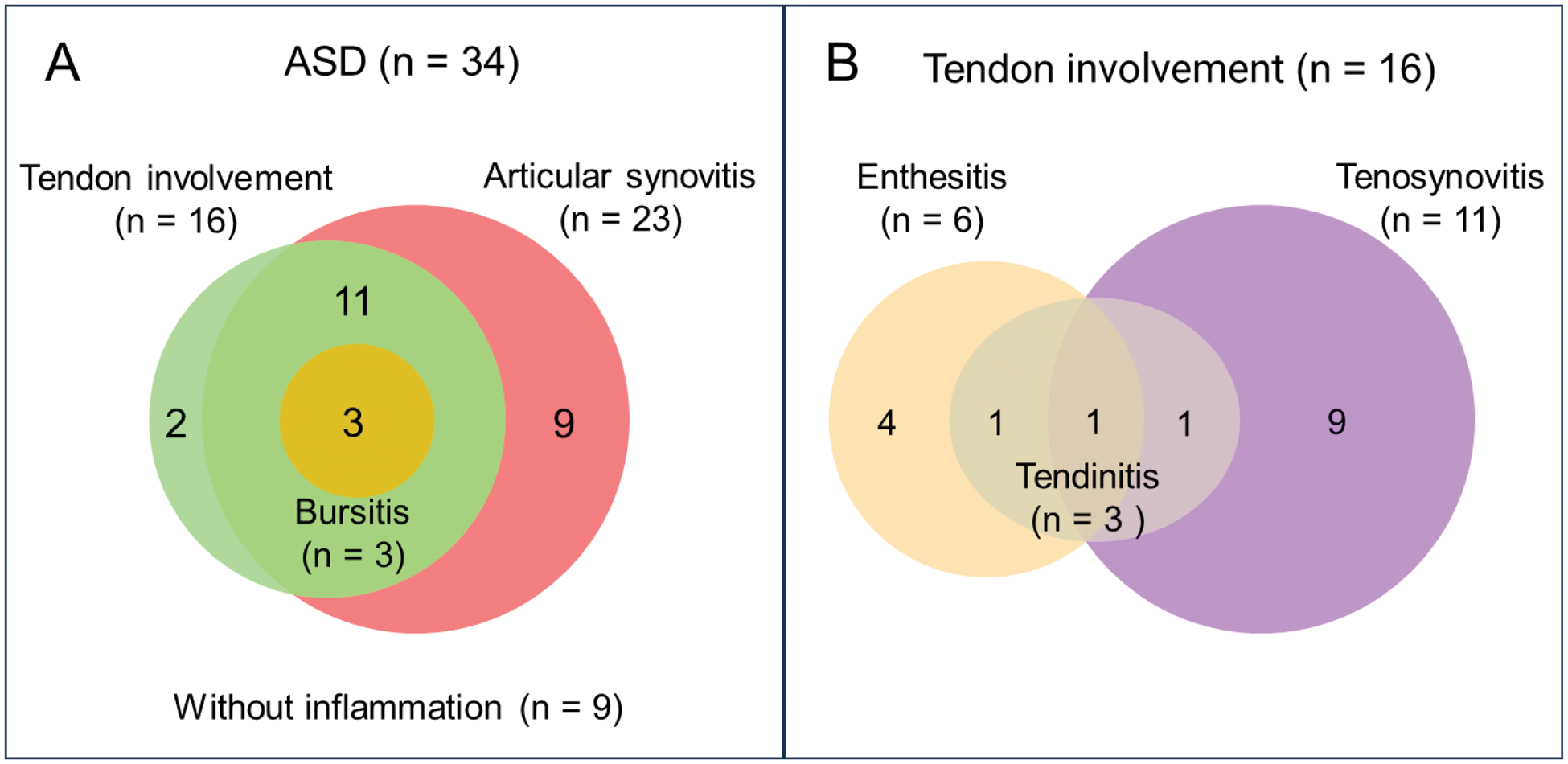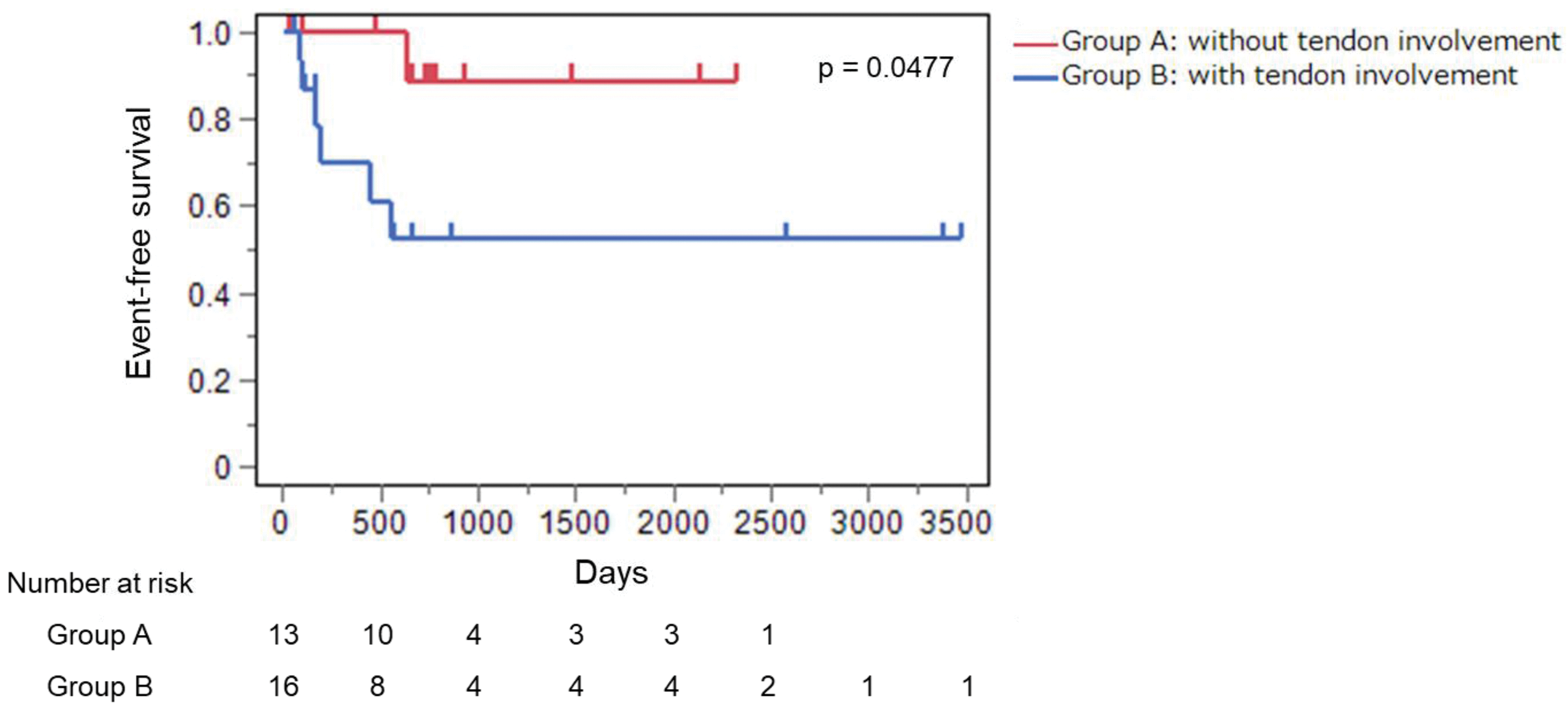

Background: Musculoskeletal ultrasound (MSUS) has proven useful in daily clinical practice for rheumatoid arthritis and other systemic inflammatory disease. Adult Still’s disease is a systemic inflammatory disease characterised by fever, rash, and musculoskeletal symptoms; however, reports on MSUS findings in adult Still’s disease patients have been scarce [1].
Objectives: To investigate characteristic patterns of joint inflammation detected with MSUS in patients with adult Still’s disease.
Methods: We reviewed consecutive patients with adult Still’s disease in Keio University Hospital between 2010 and 2024. We included patients who underwent MSUS examinations of symptomatic joints in the analysis and classified the MSUS findings according to the location of inflammation into three categories: articular synovitis, tendon involvement including tenosynovitis, tendinitis and enthesitis, and bursitis.
Results: MSUS findings of 34 patients with adult Still’s disease were investigated. The median age was 59, 25 (73.5%) were female, and 29 were systemically active with arthralgia. Active local inflammation was identified with MSUS in 25 patients; 12 new-onset and 13 relapsed patients. MSUS findings revealed that inflammation sites are various in adult Still’s disease. Tendon was involved in 16 patients and articular synovitis was observed in 23 patients, with 14 showing overlap, and three of these patients also had bursitis (Figure 1A). Tendon involvement included tenosynovitis in 11, tendinitis in 3, and enthesitis in 6 patients, with some patients having overlapping conditions (Figure 1B). When we compared clinical courses between patients with active tendon involvement and those without, Kaplan-Meier analysis revealed a significantly higher rates for relapse which was defined as requirement of glucocorticoid dose escalation in the patients with tendon involvement (log-rank, p=0.0477, Figure 2), despite no difference in other clinical features, inflammatory markers, use of tocilizumab, and disease duration at the time of MSUS examinations.
Conclusion: We identified that tendon involvement detected with MSUS can predict relapse in patients with adult Still’s disease.
REFERENCES: [1] Yamamoto EK, et al. Joint Bone Spine . 2024 Dec;91(6):105771.
MSUS findings in ASD patients. (A) Venn diagram illustrating the distribution of the location of inflammation. (B) Venn diagram illustrating the details of tendon involvement.

Kaplan-Meier curve showing event-free survival based on the presence of tendon involvement in MSUS.

Acknowledgements: NIL.
Disclosure of Interests: None declared.
© The Authors 2025. This abstract is an open access article published in Annals of Rheumatic Diseases under the CC BY-NC-ND license (